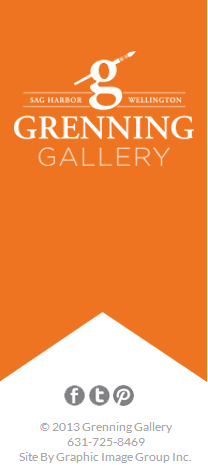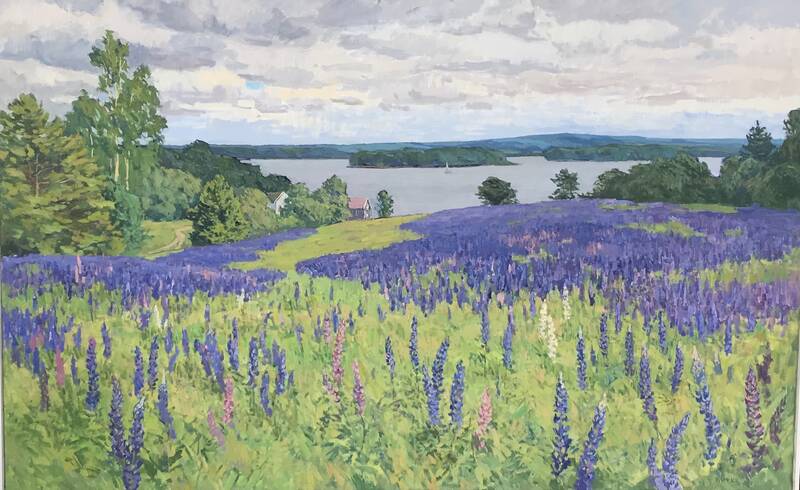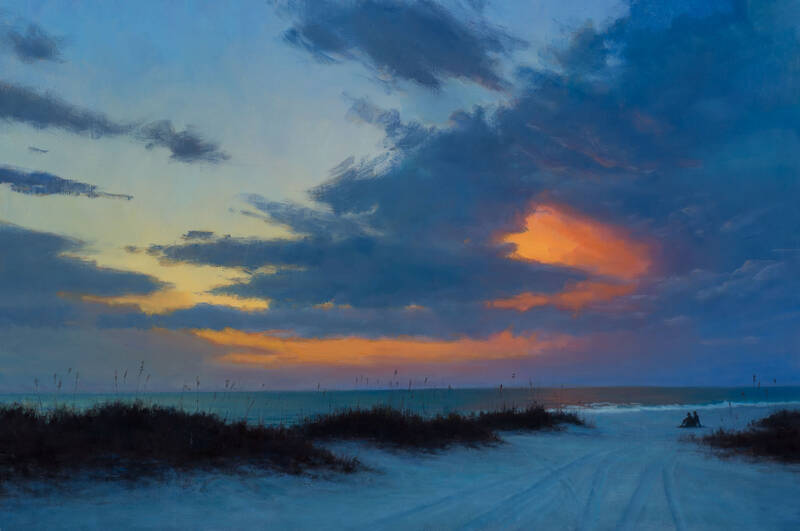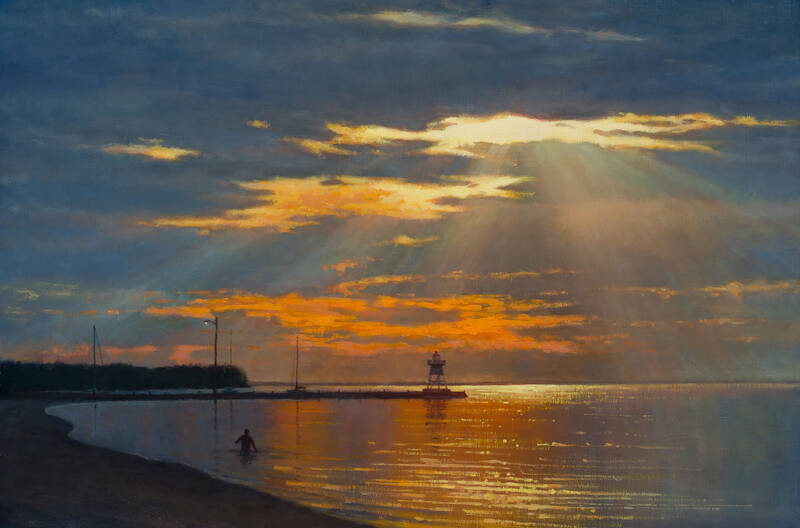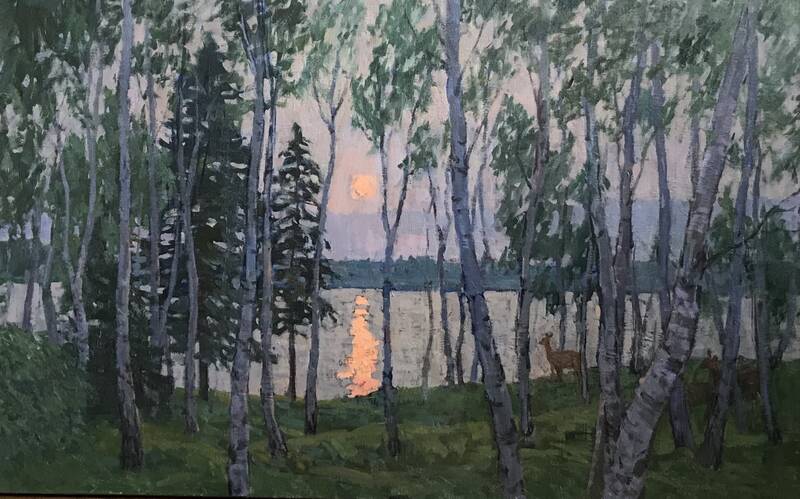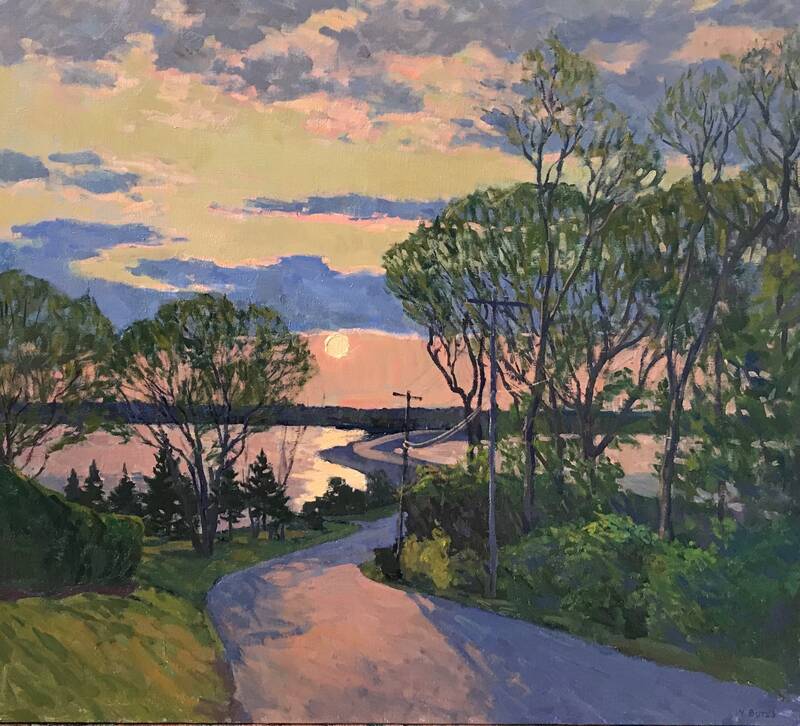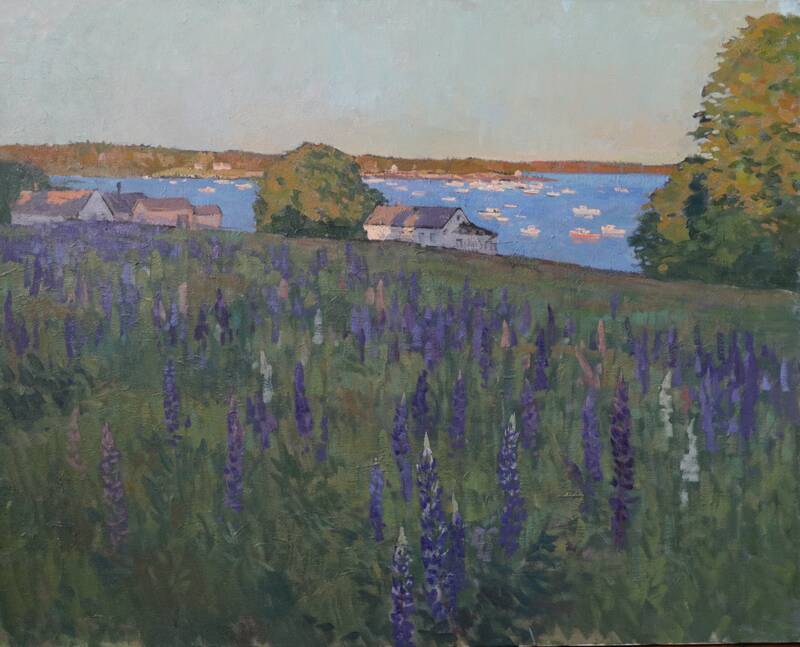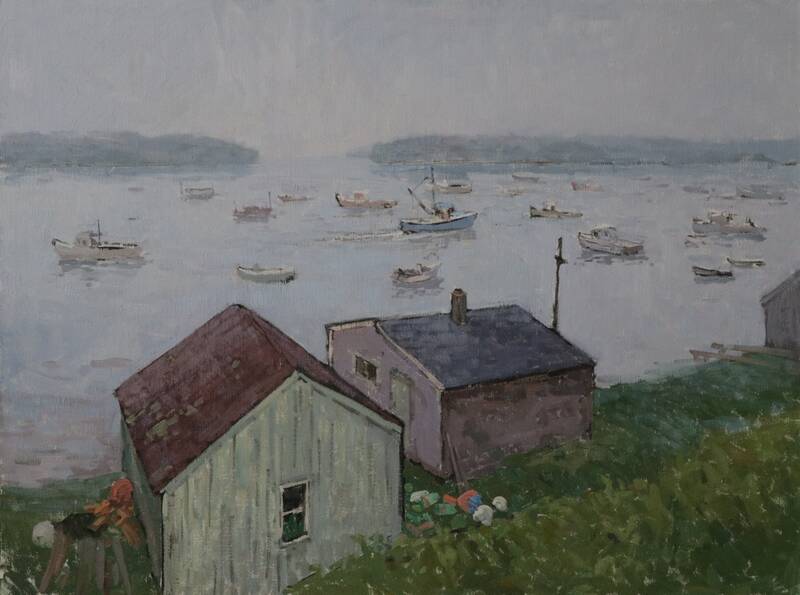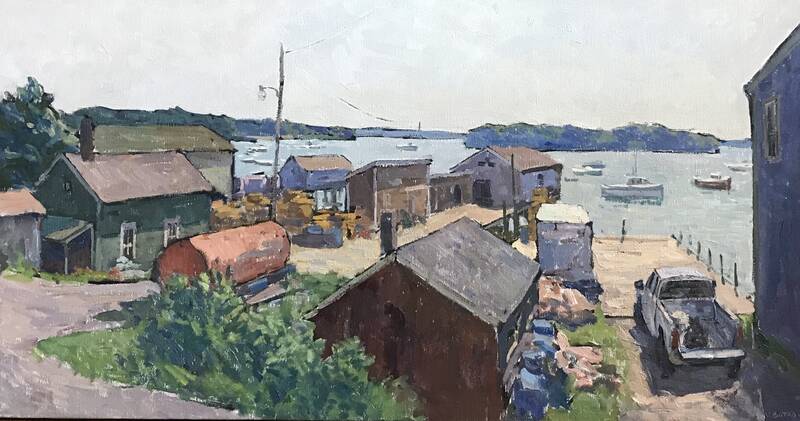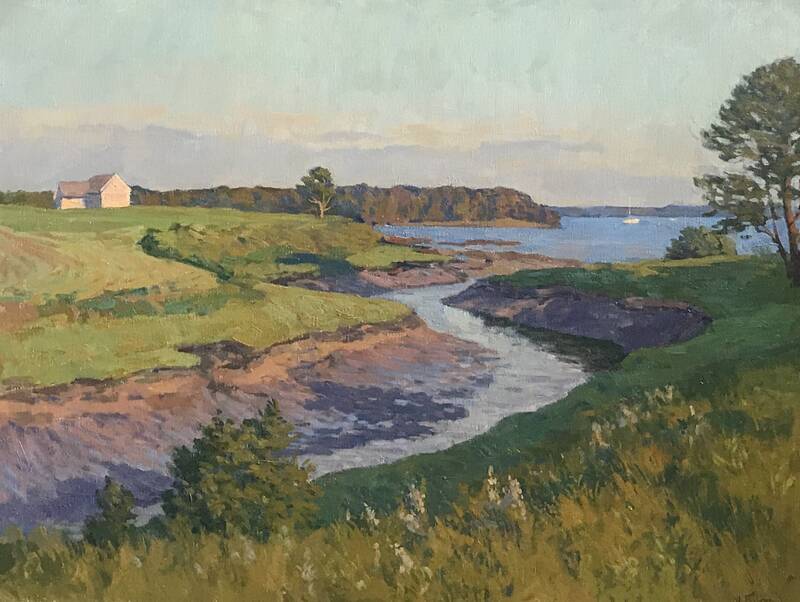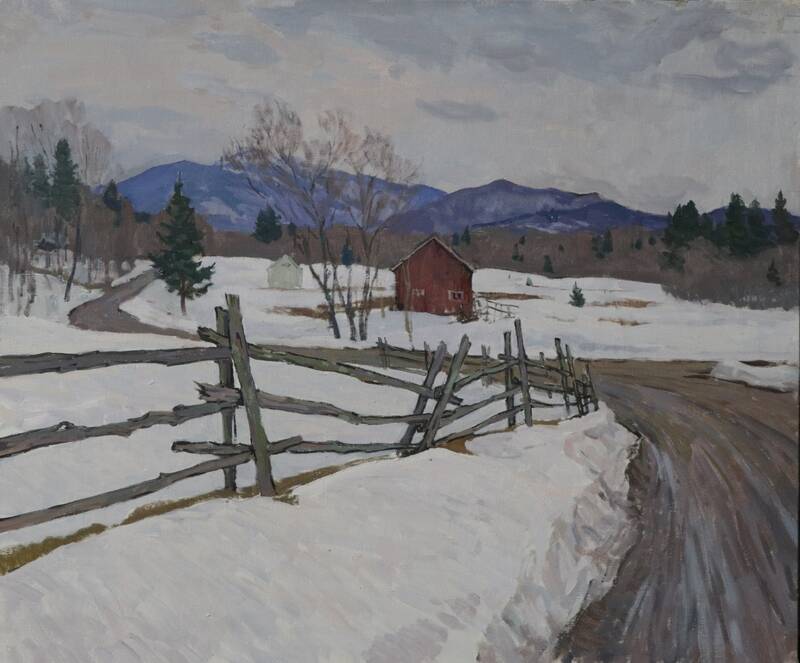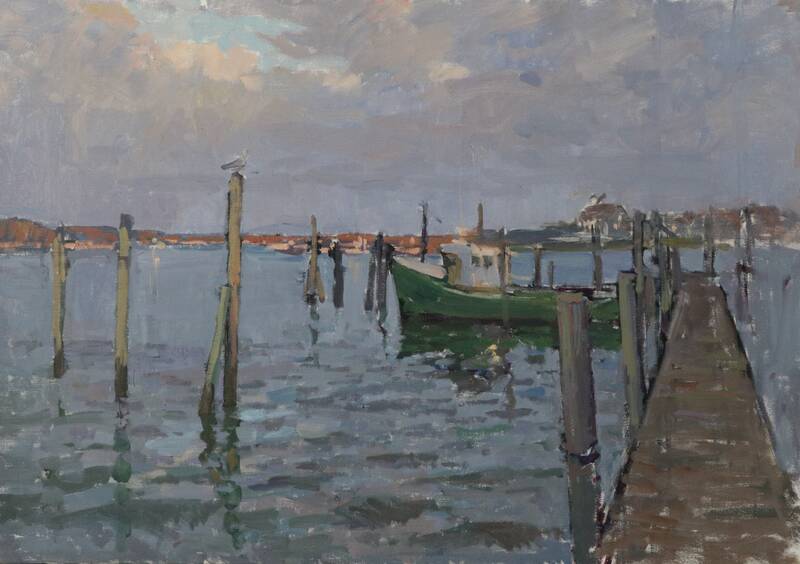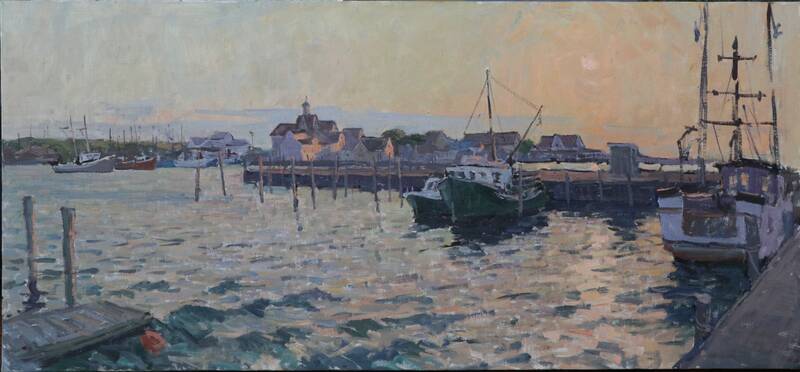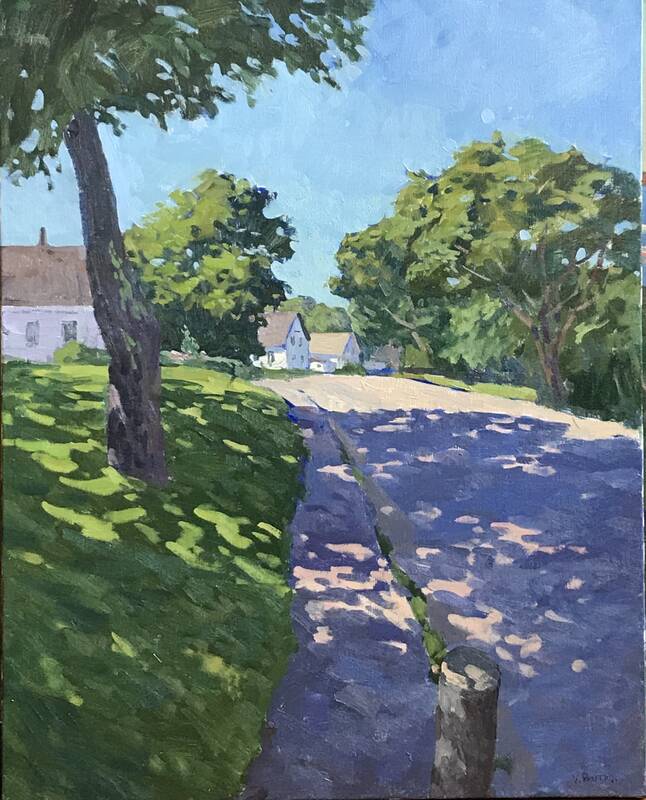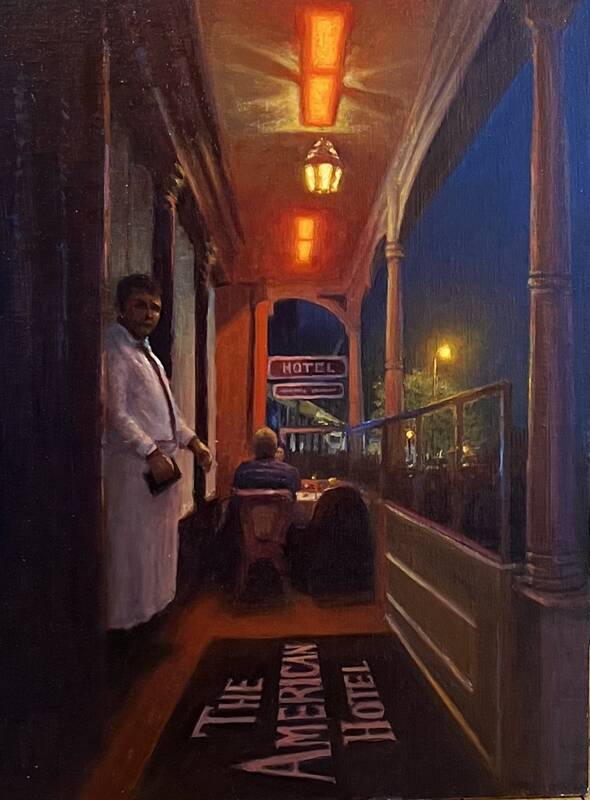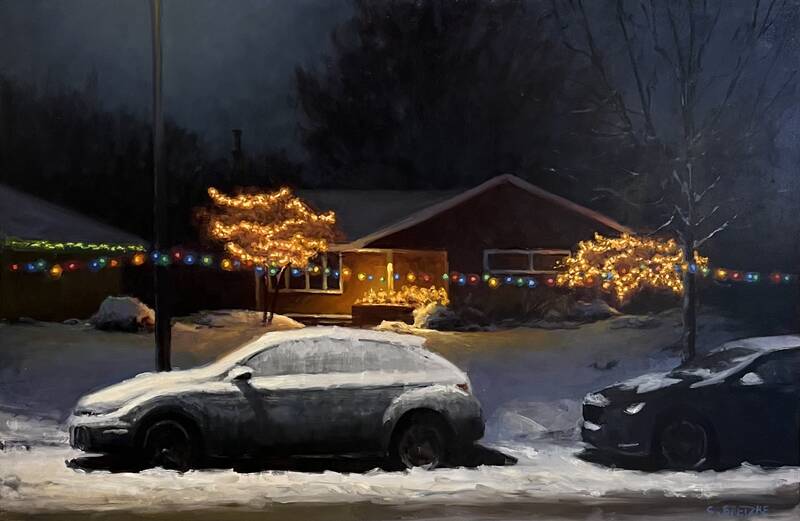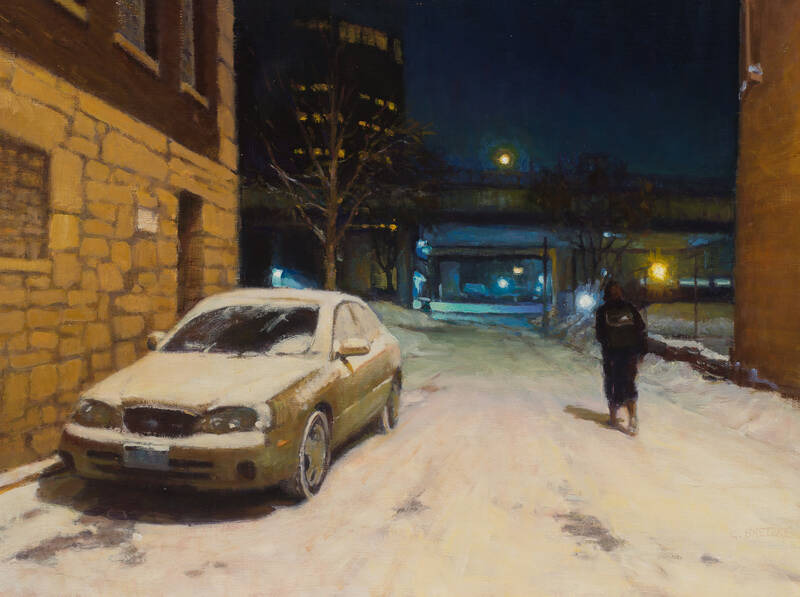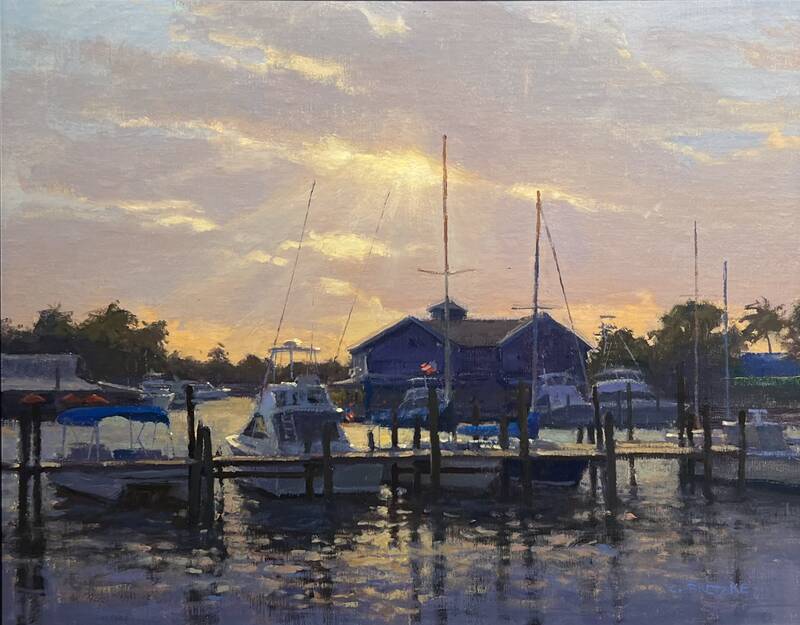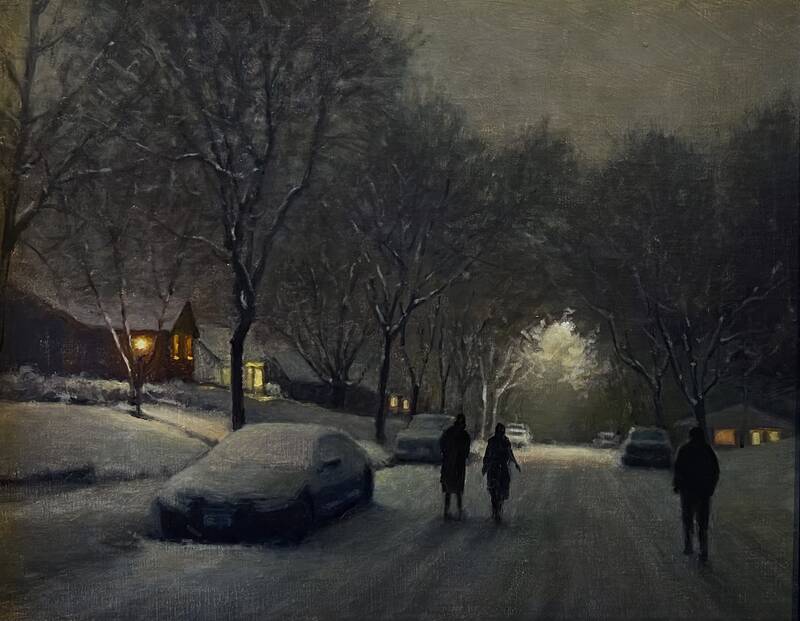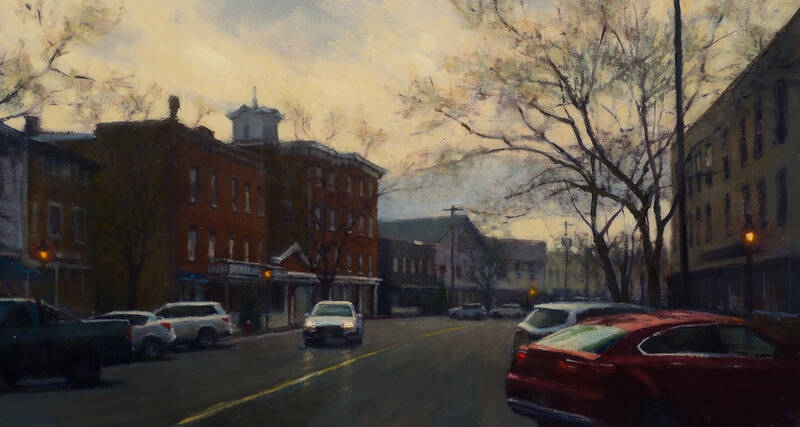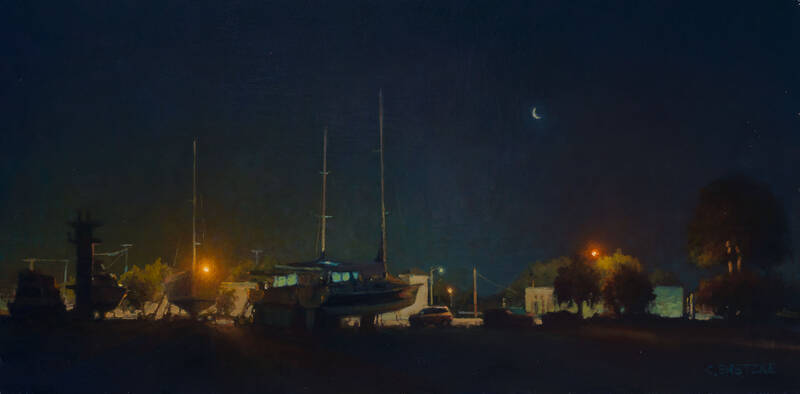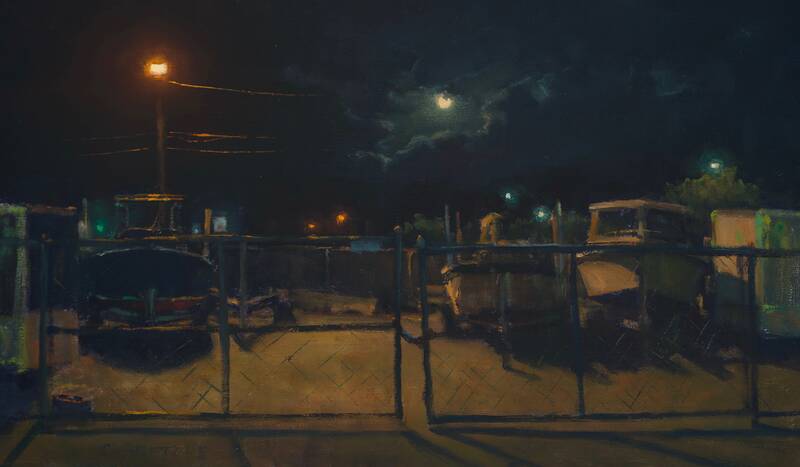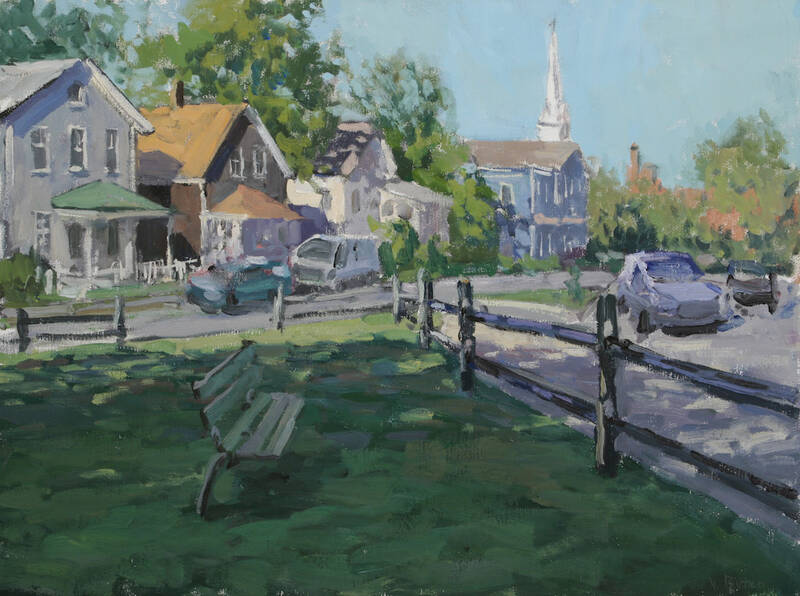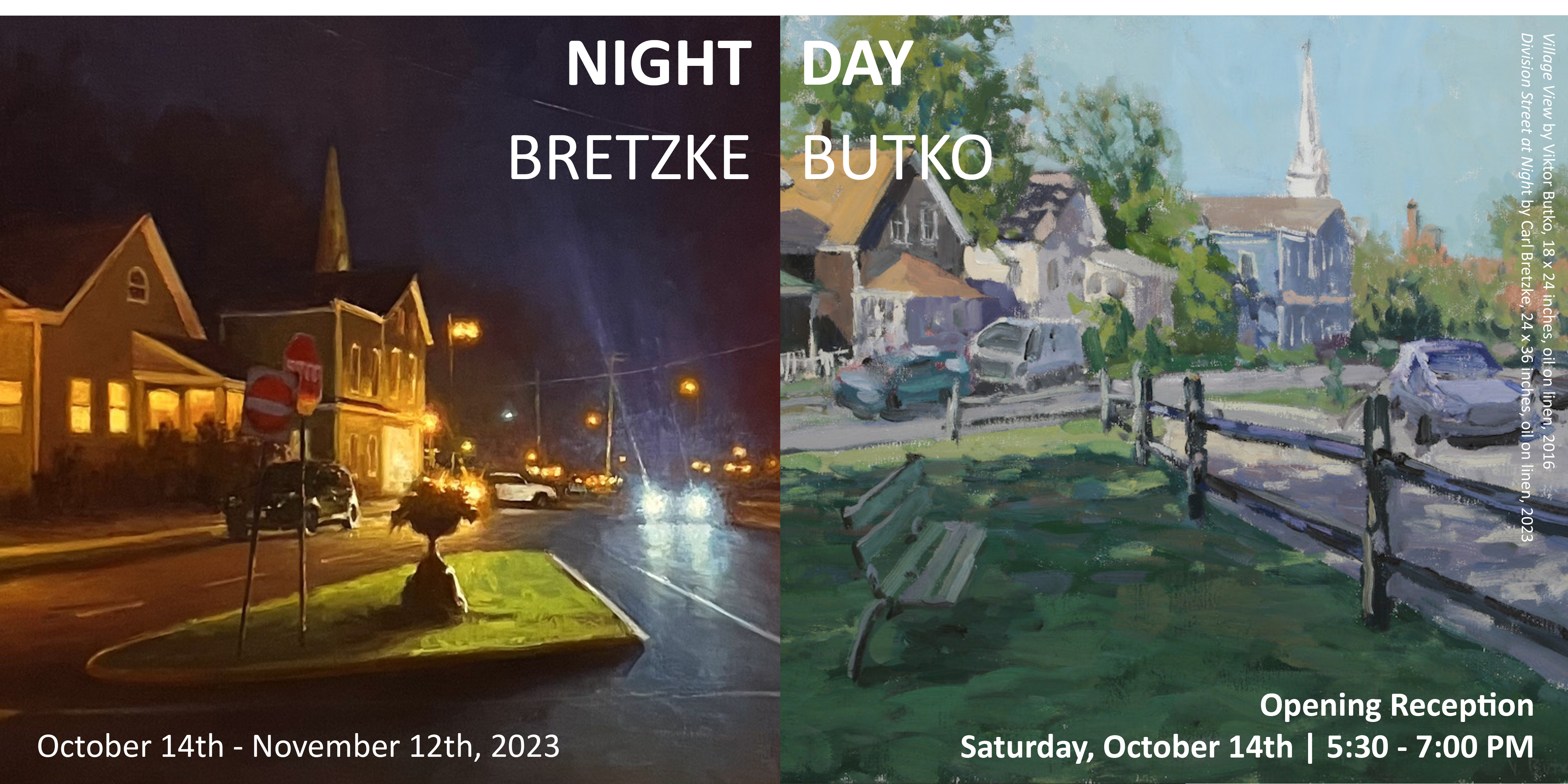
The Grenning Gallery is pleased to announce our new exhibition: Night & Day: Carl Bretzke | Viktor Butko, a two-man exhibition of masterful plein-air & studio paintings from both near and far. Artists who paint from direct observation understand that scenes change depending on the time of day, and their commitment to their craft demands a level of endurance. Time is limited to capture a shadow, or perhaps the scene is more interesting now that that shadow has moved…Night & Day is an ode to the many colors of light, and how these colors change throughout the 24-hour cycle. This exhibit will be on view through Sunday November 12th, 2023. Please join us for an Opening Reception on Saturday, October 14th from 5:30-7:00 pm.
Carl Bretzke (b. 1954 - Minneapolis, MN) returns for his 9th consecutive year exhibiting as a Grenning Gallery artist. Born, and currently based in Minnesota, Bretzke is an emotionally accurate and observant chronicler of urban and rural plein-air scenes. He is most comfortable painting the Midwest scenes he intimately knows, and his eye for American life is recognizable to any viewer. Having been a surgeon for 30 years before becoming a full-time painter, Bretzke reflects: “In medicine, you see what you know. In painting, you paint what you see. You must know it, to see it, to paint it.” His work explores the prismatic palette, and he is constantly concerned with the effect of light (perhaps an upshot of his scientific background.) Bretzke’s paintings perform tricks for the eye as he explores the subtle shifts of the different colors of light within the composition.
He is particularly adept at scenes which ooze in darkness, reminiscent of Edward Hopper. Bretzke remarks: “What most people don’t notice is, as the light drops off, the color of light changes. You must see WHERE the color changes and where the light is coming from.” In Division Street at Night Bretzke illustrates several light sources. The brightest being a pair of oncoming headlights – two glaring white orbs which cast luminous beams up to the dark sky and reflect against the road. This stream of white light allows the viewer to see the rich blue within the blackened night sky. Streetlamps adorn the perimeter of the road which radiate spheres in a burnt yellow-orange hue. An ornamented flowerpot adorns a triangular isle of grass, backlit by another pair of headlights, and a bright storefront window.
Bretzke’s work also exudes a cinematic quality that evokes a more positive and connected iteration of Edward Hopper’s deep dive into the American experience. In Waiting for the Check Bretzke places us at the historic Sag Harbor fixture, The American Hotel. A thriving establishment since 1846, this local institution holds a place in every heart that has visited our small village. One may feel complete contentment, having a late dinner on the porch, with heat lamps radiating warmth through the colder months, observing any and all Main Street movements from their treasurable seats. A waiter stands in the doorway, eager to assist with any needs, gazing directly at the viewer – a reassurance that he is prepared to serve.
Bretzke moreover delivers a series of seascapes, with colorful clouded skies, and urban scenes with recognizable contemporary automobiles parked along nostalgic neighborhood streets. His winter landscapes sing with the silence of snowflakes; the only sound being footfalls atop fresh powder.
Viktor Butko, (b.1978, Moscow) was our great find when we invited 8 Russian painters to Sag Harbor in 2016 to paint with the Grenning-Gallery-formed Russian American Painting Alliance. Not only were Butko’s eyes fresh to our landscape; his attention to light and shadow was searingly satisfying. Butko’s use of soft pastel colors unifying in the sky juxtaposed with thick, heavy outlines of the backlit trees are all at once transfixing and yet, comforting. Since his first visit, Butko has planted himself on Shelter Island for 6 months out of every year, painting the local landscape, making friends with locals, and even being invited onto a few properties to capture and preserve their prevailing brilliance.
Butko also painted the fork of Division St and Hampton Road, during his first visit to the village in 2016 In Village View. Unlike Bretzke, Butko painted this scene during daylight. The painting’s intrigue is less about the colors radiating from light sources, but instead the subtle shifts of hues found within natural light. Dappled light amidst a shadowed lawn draws our eyes to lighter shades of green. The steeple at St. Andrews Church bisects the blue sky with a strong white—naturally radiating the structure’s prominence along the village skyline.
Butko is not limited to daylight; he also paints after-dark. However, he is still most concerned with natural light sources. In April’s Moon, Shelter Island Butko shows us a pond surrounded by tall, bare trees, underneath a glowing full moon. The bright creamy orb lightens the entire sky, and shimmers delicately onto the pond’s surface.
In this exhibtion, Butko paints the same location at only slightly different times of day - resulting in two very dissimilar works. In "Sunset Over the Islands" Butko shows a seascape from a hilltop adorned with evergreen trees. The sky high-above is a creamy gold, with streaks of purple clouds. The sky evolves to a pinker hue as it falls to the horizon. The surface of the sea appears a silver, lilac color, reflecting the subtle hues in the sky above. In "Fiery Sunset" Butko presents a sky with bold, saturated colors - still true to life! This is peak sunset, where the sky is canary yellow, the clouds are glowing a fiery pink and backlit with a deep lilac hue. The sea below reflects these colors loudly. Just a few minutes separate the point of view in each composition, yet the paintings are drastically different. A prime example of the importance of timing for a plein air painter.
While Bretzke is fascinated by man-made light-sources combatting the darkness of night, Butko paints the natural, sprawling light of early, mid, and late day. Together, both artists remind us of how light shapes our world in the course of 24 hours.
